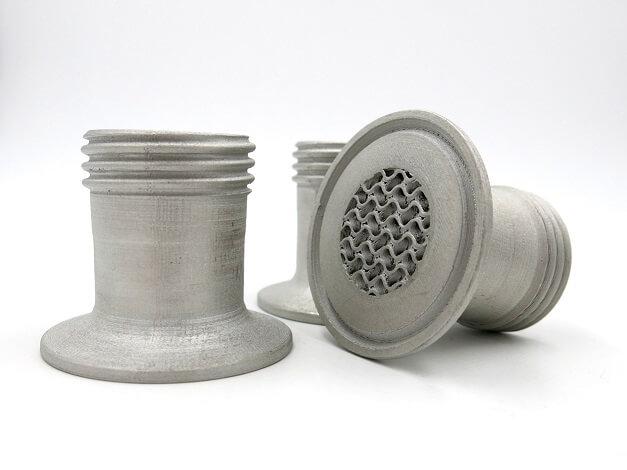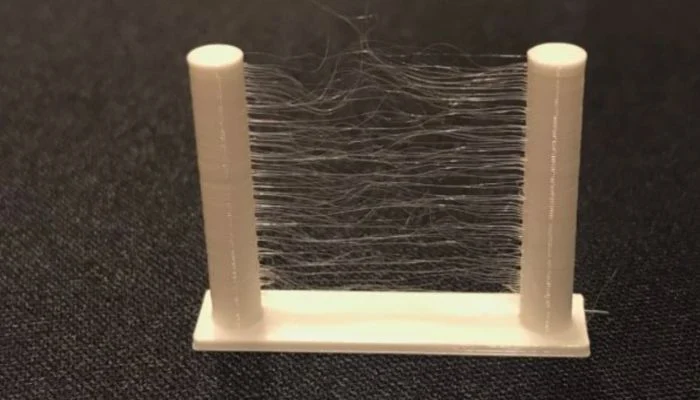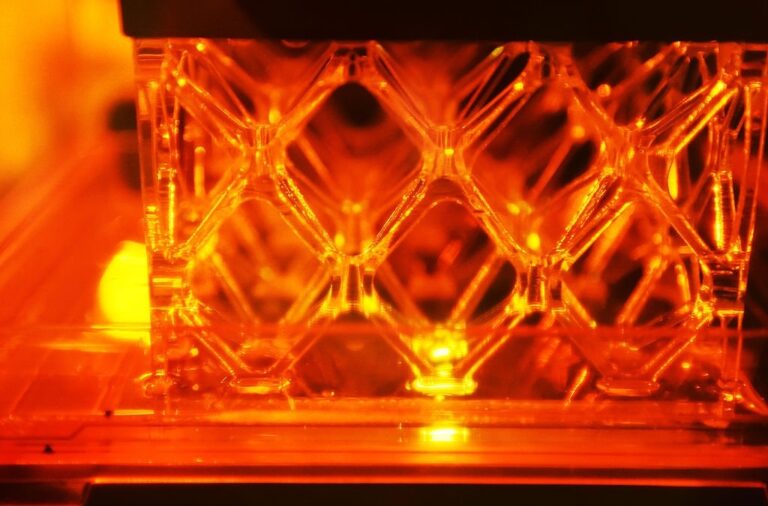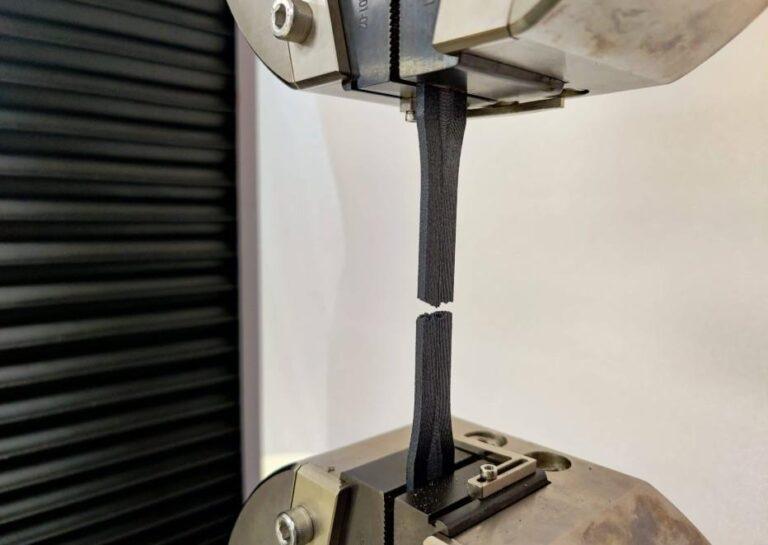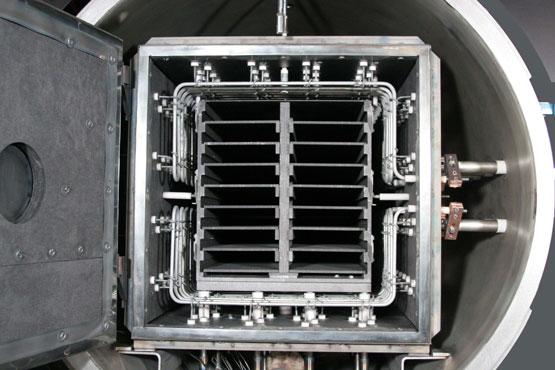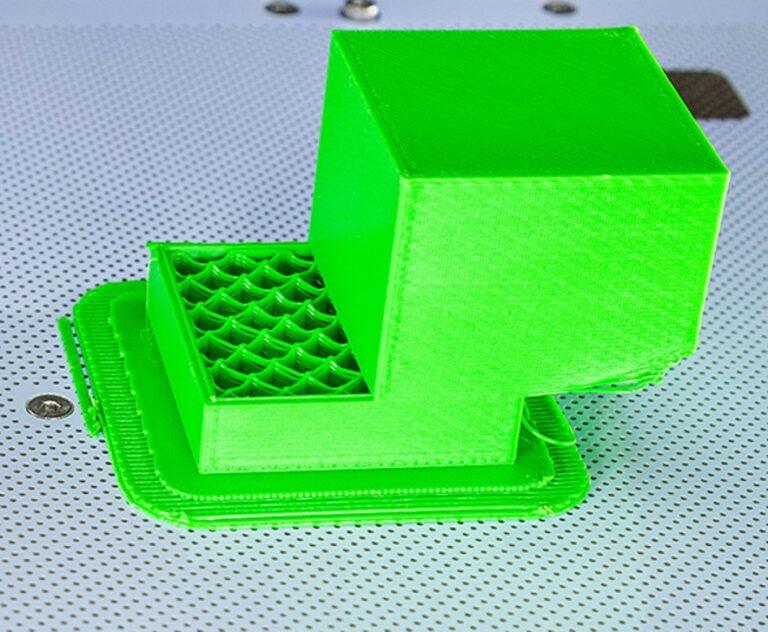A Beginner’s Guide to 3D Printing with PLA Filament
Introduction
Welcome to our beginner’s guide to 3D printing with PLA filament! For those who are brand-new to the world of 3D printing, we’ll give a thorough introduction to using PLA filament in this blog post. PLA is a great option for both new and seasoned users because it is one of the most widely used and user-friendly materials.
In this guide, we’ll cover crucial topics such as understanding PLA filament, its popularity among beginners, and optimizing your 3D printer for the best results. Moreover, we’ll dive into selecting the ideal PLA filament, share valuable tips for efficient 3D printing, and discuss post-processing techniques to enhance your prints’ quality and durability.
Additionally, we’ll explore the environmental impact of PLA filament and its biodegradable properties, which contribute to its status as an eco-friendly 3D printing material. So let’s get going and investigate the fascinating opportunities that 3D printing with PLA filament offers!
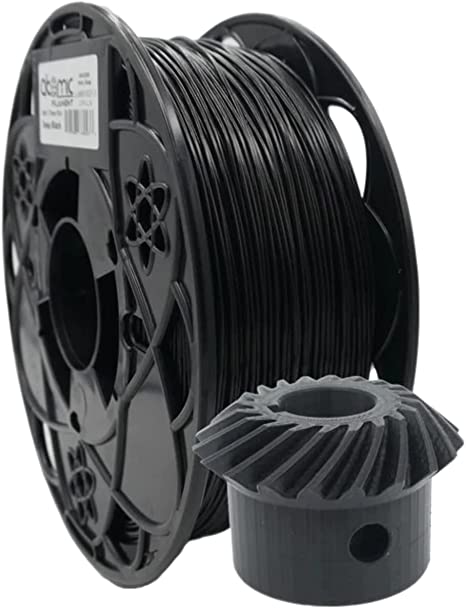
Introduction to PLA Filament
Welcome to our exploration of PLA filament, a versatile and popular material in the world of 3D printing. We’ll go over what PLA filament is in this section and why it’s a great option for beginners. We’ll provide you with the fundamental knowledge to understand and utilize PLA filament in your 3D printing projects.
What is PLA filament?
PLA filament, short for Polylactic Acid, is a type of thermoplastic polymer made from renewable resources like cornstarch, sugarcane, and tapioca roots. Because of its simplicity of usage, low printing temperature, and eco-friendliness, it is frequently utilized in 3D printing. When heated, PLA filament becomes soft and moldable, allowing it to be extruded through a 3D printer’s nozzle to create intricate shapes and designs.
Why is PLA a popular choice for beginners?
PLA filament is a go-to choice for beginners for several reasons. First, it has a low melting point, typically around 180-220°C, making it easier to print with compared to other materials. This reduces the risk of nozzle clogging and simplifies temperature settings for new users.
Furthermore, PLA filament exhibits minimal warping and shrinkage during the printing process. This ensures that prints adhere well to the print bed and maintain their intended shape. Additionally, PLA filament produces a pleasant, sweet aroma when heated, unlike other materials that can emit strong or unpleasant odors.
Lastly, PLA filament is available in a wide range of colors and finishes, offering flexibility and customization options for beginners to experiment with. The combination of these factors makes PLA filament an ideal choice for those starting their 3D printing journey.
Preparing Your 3D Printer for PLA Filament
In this section, we’ll guide you through setting up your 3D printer to achieve optimal results when printing with PLA. By focusing on the right printer settings and bed adhesion techniques, you’ll be well-equipped to create high-quality prints.
Printer settings for PLA filament
To get the best results, it’s essential to configure your 3D printer settings accordingly. First, set the nozzle temperature between 180-220°C. The precise temperature may vary depending on the specific brand, so it’s a good idea to refer to the manufacturer’s recommendations. Additionally, set the heated bed temperature to around 50-60°C, which helps to prevent warping and improve bed adhesion.
Adjust the print speed to suit the material’s characteristics. A speed of 40-60mm/s is generally suitable for most prints. Slower speeds can improve print quality, while faster speeds may lead to reduced accuracy or increased stringing.
Bed adhesion techniques for PLA
Proper bed adhesion is crucial for successful prints. A clean and level print bed is the first step towards ensuring a strong bond between the print and the surface. Make sure to clean the bed with isopropyl alcohol before each print to remove any residue.
There are several bed adhesion techniques to consider when printing with PLA. Blue painter’s tape, Kapton tape, or build surfaces specifically designed for 3D printing can all provide a reliable foundation for your prints. Applying a thin layer of glue stick, hairspray, or a specialized adhesion solution to the bed can also enhance adhesion.
Remember to re-level the bed periodically, as this can help maintain consistent adhesion throughout the printing process.
Cooling fan
The cooling fan plays a vital role in PLA printing. Proper cooling helps solidify the material as it’s extruded, preventing deformation and improving print quality. It’s essential to ensure your cooling fan is functioning correctly and directing airflow toward the printed part. Some printers allow you to adjust fan speed settings, so experiment with different levels to find the optimal cooling balance for your PLA prints.
Nozzle and extruder maintenance
Regular maintenance of your nozzle and extruder is crucial for consistent print quality. To clean the nozzle, perform a “cold pull” or use a nozzle cleaning needle to remove any debris or old filament. Check the extruder gears for debris or filament particles, and clean them with a brush if necessary. Additionally, make sure the nozzle and extruder assembly are tightened securely to prevent leaks or inconsistent extrusion.
Calibration
Proper calibration of your 3D printer is essential for accurate and consistent prints. Here are some key calibration procedures:
Axis alignment: Check that the printer’s X, Y, and Z axes are perpendicular and level. Misaligned axes can lead to skewed or distorted prints. You can use a square or digital inclinometer to verify alignment.
Extruder steps per millimeter (E-steps): Calibrate the E-steps to ensure the extruder feeds the correct amount of filament. To do this, mark a specific length of filament, extrude a set amount using the printer’s controls, and then measure the remaining length to verify if the extrusion was accurate. Adjust the E-steps value accordingly.
PID tuning: The Proportional-Integral-Derivative (PID) controller maintains stable temperatures for the nozzle and heated bed. Perform a PID autotune using your printer’s firmware or manual controls to find the optimal PID values for your specific hardware setup. This helps maintain consistent temperatures during printing, leading to improved print quality.
By paying attention to these aspects of 3D printer preparation, you’ll be more likely to achieve successful and high-quality PLA prints.
How to Choose the Right PLA Filament
In this section, we’ll discuss how to select the ideal PLA filament for your 3D printing needs. We’ll cover different brands, their qualities, and the variety of colors and finishes available, ensuring you make an informed decision when purchasing PLA filament.
Different PLA brands and their qualities
Not all PLA filaments are created equal, and the quality can vary significantly between brands. To choose the right PLA filament, consider factors like diameter consistency, print temperature range, and user reviews. High-quality PLA filament will have a consistent diameter, reducing the risk of extrusion issues. It’s also essential to choose a filament with a well-defined temperature range that matches your 3D printer’s capabilities.
When selecting a brand, consider user reviews and recommendations from online forums or social media groups. Opt for reputable brands with a history of producing reliable and consistent PLA filament to ensure a smooth printing experience.
5 Top Brands for PLA Filament
- Hatchbox: Hatchbox is a well-known and popular brand in the 3D printing community. They offer high-quality, reliable PLA filament with a wide range of colors and finishes. Hatchbox PLA is known for its consistent diameter, easy printability, and smooth finish.
- eSUN: eSUN is another respected PLA filament brand, offering a variety of colors and types. Their PLA+ filament, in particular, boasts improved strength and flexibility compared to standard PLA. eSUN filaments are praised for their consistent quality and affordable pricing.
- Prusament: Developed by the reputable 3D printer manufacturer Prusa Research, Prusament PLA filament undergoes rigorous quality control, ensuring excellent diameter consistency and minimal color deviations. Prusament is known for its high-quality prints and smooth finish.
- MatterHackers: MatterHackers offers their Build Series PLA filament, which is designed for everyday use and provides reliable, consistent results. They offer a wide selection of colors, and their filament is known for its ease of use and great layer adhesion.
- Proto-pasta: Proto-pasta is an innovative filament brand offering unique PLA filament options such as high-temperature resistant PLA, conductive PLA, and even aromatic coffee-infused PLA. They are popular among users who want to experiment with unconventional materials and finishes.
Each of these brands offers a variety of PLA filament options, catering to different user preferences and requirements. By selecting a reputable brand, you’ll likely enjoy better print quality and a more consistent 3D printing experience.
Comparison Table
a comparison table for the PLA filaments from these brands based on various properties, print conditions, and their strengths and weaknesses. Please note that the values provided are general guidelines and may vary depending on the specific filament type within each brand.
| Brand | Print Temp. (°C) | Bed Temp. (°C) | Strength | Ease of Use | Unique Features | Price Range |
|---|---|---|---|---|---|---|
| Hatchbox | 180-220 | 40-60 | High | High | Wide color range, smooth finish | $$ |
| eSUN | 190-230 | 40-60 | High | High | PLA+, affordable pricing | $ |
| Prusament | 190-220 | 40-60 | High | High | Rigorous quality control | $$$ |
| MatterHackers | 190-220 | 40-60 | High | High | Great layer adhesion | $$ |
| Proto-pasta | 190-230 | 40-60 | High | Medium | Unique materials & finishes | $$$ |
This table should give you a general idea of the properties and print conditions for each brand’s PLA filaments. Keep in mind that every printer and specific filament type may require slight adjustments to the settings for optimal results. It’s important to consult the manufacturer’s guidelines for the specific filament you’re using and to experiment with different settings to achieve the best print quality.
Pros and Cons
a comparison table highlighting the general strengths and weaknesses of PLA filaments from these brands. However, it’s important to note that these points may vary depending on the specific filament type within each brand and individual user experiences.
| Brand | Strengths | Weaknesses |
|---|---|---|
| Hatchbox | Consistent quality, wide color range, smooth finish | Slightly higher price compared to budget brands |
| eSUN | Affordable pricing, consistent quality, PLA+ option | Higher price may require more fine-tuning |
| Prusament | Rigorous quality control, excellent consistency | Higher price, limited availability |
| MatterHackers | Good layer adhesion, ease of use | Slightly higher price compared to budget brands |
| Proto-pasta | Unique materials & finishes, innovative products | The higher price may require more fine-tuning |
This table provides an overview of the general strengths and weaknesses of each brand’s PLA filaments. It’s essential to consider these points while also taking into account your specific requirements, printer capabilities, and budget to make the best decision for your 3D printing needs.
PLA filament colors and finishes
PLA filament is available in a wide range of colors and finishes, allowing you to create prints with varying aesthetics. Standard colors include black, white, red, blue, green, and yellow, among others. You can also find more unique colors, such as translucent, metallic, or color-changing filaments that respond to temperature or UV light.
Different finishes can provide your prints with a distinct appearance. Matte PLA filament, for example, offers a smooth, non-reflective surface, while glossy PLA filament gives a shiny, reflective finish. Experimenting with various colors and finishes can add a creative touch to your 3D printed projects and help you achieve the desired look.
By considering these factors, you’ll be better equipped to select the perfect PLA filament for your 3D printing needs, resulting in high-quality and visually appealing prints.
Tips for Successful 3D Printing with PLA Filament
In this section, we will share valuable tips to help you achieve successful 3D printing with PLA filament. By following these recommendations, you can optimize print quality and avoid common issues associated with PLA printing.
Optimizing print speed and temperature
First, let’s discuss optimizing print speed and temperature. To ensure a successful print, it’s crucial to find the right balance between print speed and temperature. Generally, PLA filament prints well at temperatures between 190-220°C. However, the optimal temperature may vary depending on your specific filament and printer. Slower print speeds typically require lower temperatures, while faster speeds might need higher temperatures. Start with the manufacturer’s suggested settings and adjust accordingly to achieve the best results.
How to avoid common PLA printing problems
Next, we’ll address how to avoid common PLA printing problems.
poor bed adhesion
One of the most frequent issues is poor bed adhesion. To improve adhesion, clean the print bed regularly, use a suitable bed surface (e.g., BuildTak, PEI, or painter’s tape), and apply a thin layer of glue stick or hairspray. Additionally, ensure the bed is properly leveled and set the right bed temperature, usually around 40-60°C for PLA filament.
stringing or oozing
Another common problem is stringing or oozing. This occurs when filament leaks from the nozzle during travel moves, creating strings or blobs on the print. To minimize stringing, fine-tune your retraction settings and consider reducing the printing temperature.
Warping
Warping occurs when the edges of your print lift off the build plate. This is generally less of a problem with PLA filament compared to other materials like ABS, but it can still happen. To prevent warping, ensure your bed is level and properly heated, and use appropriate adhesion techniques.
Layer adhesion issues
If you’re experiencing weak layer bonding or delamination, it might be due to an incorrect nozzle temperature, print speed, or cooling settings. Increasing the temperature or slowing down the print speed can help improve layer adhesion. However, be cautious of overdoing it, as this can lead to other issues like stringing.
Inconsistent extrusion
Inconsistent extrusion can manifest as uneven layers, gaps, or blobs in your prints. This can be caused by a clogged nozzle, inconsistent filament diameter, or incorrect extrusion settings. To fix this, clean your nozzle regularly, use a high-quality filament, and calibrate your extruder.
Overheating
PLA is prone to overheating, which can cause deformation or sagging in your prints, especially in overhangs and bridges. To prevent overheating, ensure proper cooling settings in your slicer and use an adequate cooling fan.
Support removal difficulties
PLA supports can sometimes be difficult to remove without damaging the print. To make support removal easier, experiment with different support settings in your slicer, such as adjusting support density, and interface layers, or using tree-like supports.
By following these tips and adjusting your printer settings as needed, you’ll be well on your way to successful 3D printing with PLA filament. Always remember that experimentation and patience are key factors in achieving the best print quality.
Post-Processing Techniques for PLA Prints
In this section, we will cover post-processing techniques for PLA prints. We’ll discuss how to remove supports and clean your print, as well as methods for sanding, painting, and gluing PLA prints. With the right post-processing techniques, you can elevate the quality and appearance of your 3D printed projects.
Removing supports and cleaning your print
First, let’s talk about removing supports and cleaning your print. After your PLA print is complete, it’s essential to remove any support material gently and carefully to avoid damaging the print. You can use needle-nose pliers, flush cutters, or a hobby knife for this task. Once supports are removed, clean the print surface by removing any leftover filament strands or debris using a soft brush or a damp cloth.
Sanding, painting, and gluing PLA prints
Next, let’s delve into sanding, painting, and gluing PLA prints. Sanding your PLA print can help smooth the surface and remove layer lines. Start with a coarse grit sandpaper (around 200 grit) and work your way up to a fine grit (around 600 grit) for the best results. Always sand in a circular motion and apply even pressure.
After sanding, you may wish to paint your PLA print. Make sure to use a primer specifically designed for plastics, as this will help the paint adhere better. Acrylic paints work well with PLA prints, and you can apply them using brushes, airbrushes, or spray cans. Remember to apply thin, even coats and allow ample drying time between coats.
Finally, you may need to glue PLA prints together, especially for larger or multi-part models. Cyanoacrylate (CA) glue, commonly known as super glue, works well for bonding PLA parts. For even stronger bonds, you can use a two-part epoxy. Always apply the adhesive sparingly and ensure the parts are aligned correctly before the glue sets.
By utilizing these post-processing techniques, you can enhance the appearance and durability of your PLA prints, making them look more polished and professional.
The Environmental Impact of PLA Filament
In this section, we will discuss the environmental impact of PLA filament, focusing on its biodegradable and renewable properties, as well as proper disposal methods. Understanding the ecological implications of PLA filament can help you make more informed choices when selecting materials for your 3D printing projects.
Biodegradable and renewable properties of PLA
First, let’s explore the biodegradable and renewable properties of PLA filament. PLA, or polylactic acid, is derived from plant-based resources such as corn starch, sugarcane, and tapioca roots. This renewable origin makes it more environmentally friendly compared to petroleum-based plastics. Furthermore, PLA filament is biodegradable under the right conditions. When exposed to heat, moisture, and microorganisms in an industrial composting facility, PLA can break down into its natural components within a few months to two years.
However, it is important to note that PLA’s biodegradation process is slower in home composting systems and may not break down at all in landfills due to the lack of proper conditions. This brings us to the topic of proper disposal of PLA waste.
Proper disposal of PLA waste
To ensure the responsible disposal of PLA waste, it is essential to be aware of your local waste management facilities and their capabilities. If your local facility accepts PLA for composting, you can dispose of your PLA waste there. Otherwise, consider reusing or recycling your PLA prints whenever possible. Some 3D printing enthusiasts even use devices like filament recyclers to turn their waste PLA into new filament, further reducing the environmental impact.
In conclusion, PLA filament offers a more eco-friendly alternative to traditional petroleum-based plastics. By understanding its biodegradable and renewable properties, as well as the proper disposal methods, you can help minimize the environmental impact of your 3D printing activities.
Conclusion and Next Steps
When we come to the end of this book, you need to have a firm grasp of PLA filament and its different facets, such as its characteristics, printer settings, and post-processing procedures. With this information, you may confidently start your 3D printing experience with PLA filament, a material that is suitable for beginners.
Expanding your 3D printing skills with PLA filament
Consider experimenting with various brands, hues, and finishes in order to advance your PLA filament 3D printing abilities. Experiment with more intricate patterns and post-processing methods to push the limits of your creativity. As you become more familiar with printing, you can spend more time fine-tuning your printer settings to get the greatest results.
Exploring other materials for 3D printing
As your 3D printing ventures advance, you might wish to investigate alternative materials to PLA filament. There are numerous types of materials available, including ABS, PETG, and TPU, each with unique properties and applications. You can select the best solution for your particular tasks by doing some research on these materials and learning about their advantages and disadvantages.
In conclusion, PLA filament is a great place for 3D printing beginners to start. As you gain knowledge and self-assurance, keep pushing yourself by trying out new materials and methods to diversify your 3D printing toolkit. You can realize the full potential of this fascinating technology with perseverance and inquiry.
How to choose the best PLA filament brand for your 3D printing projects?
- Research the market
Familiarize yourself with popular and reputable PLA filament brands by reading reviews, checking online forums, and asking for recommendations from experienced 3D printing enthusiasts.
- Determine your printing requirements
Consider the types of projects you plan to work on and the desired quality of your prints. Some brands may offer higher-quality filaments suitable for more detailed prints, while others may focus on more affordable options for casual printing.
- Compare filament specifications
Review the specifications of different PLA filament brands, such as diameter tolerance, melting temperature, and color options. Ensure that the filament you choose is compatible with your 3D printer.
- Evaluate the filament quality
Pay attention to factors like the filament’s consistency, uniformity, and smoothness. High-quality filaments should have minimal variations in diameter and a smooth texture, which can help prevent issues during printing.
- Consider the environmental impact
Opt for PLA filament brands that prioritize sustainability, such as those made from renewable resources and offering biodegradable properties.
- Compare prices and availability
Consider the cost of different PLA filament brands and whether they are readily available in your region. Keep in mind that more expensive filaments may offer higher quality, but your budget may dictate your final choice.
- Test a small sample
Before committing to a large purchase, try printing a small sample with the PLA filament brand you’re considering. This will help you assess the filament’s performance and ensure it meets your expectations.
- Make an informed decision
Based on your research, requirements, and testing, choose the PLA filament brand that best suits your needs and preferences. Remember that you can always explore other brands in the future as your 3D printing skills and interests evolve.
FAQs
PLA filament is compatible with most FDM (Fused Deposition Modeling) 3D printers. However, always check your printer’s specifications and manufacturer’s recommendations to ensure compatibility.
The optimal printing temperature for PLA filament typically ranges from 190°C to 220°C. The exact temperature may vary depending on the brand and printer model, so it’s best to refer to the filament manufacturer’s guidelines or conduct test prints to find the ideal temperature for your setup.
To prolong the lifespan of your PLA filament, store it in a cool, dry place away from direct sunlight. It’s recommended to keep the filament in a sealed container or bag with desiccant packets to minimize exposure to moisture, as moisture can negatively affect print quality.
PLA prints may warp or have poor bed adhesion due to incorrect bed temperature, inadequate bed surface preparation, or improper leveling. Try increasing the bed temperature to 50-60°C, applying adhesion solutions like painter’s tape or glue sticks, and ensuring your bed is properly leveled.
PLA is a biodegradable material made from renewable resources, but its recycling process is different from conventional plastics. While some facilities accept PLA for recycling, it’s best to check with your local recycling center for specific guidelines. Alternatively, you can explore creative ways to repurpose PLA waste in DIY projects or look into home composting options for small quantities of PLA.

